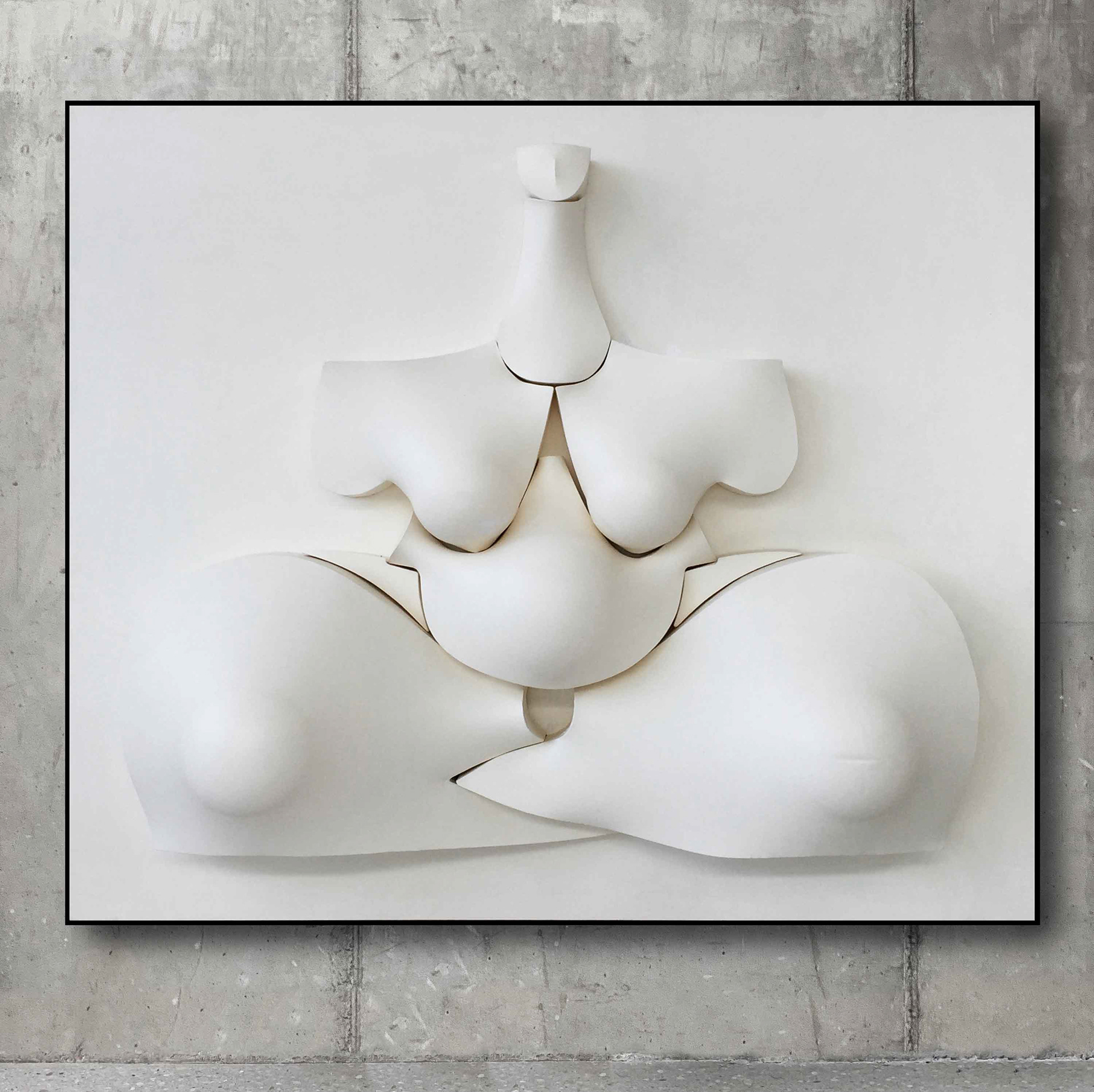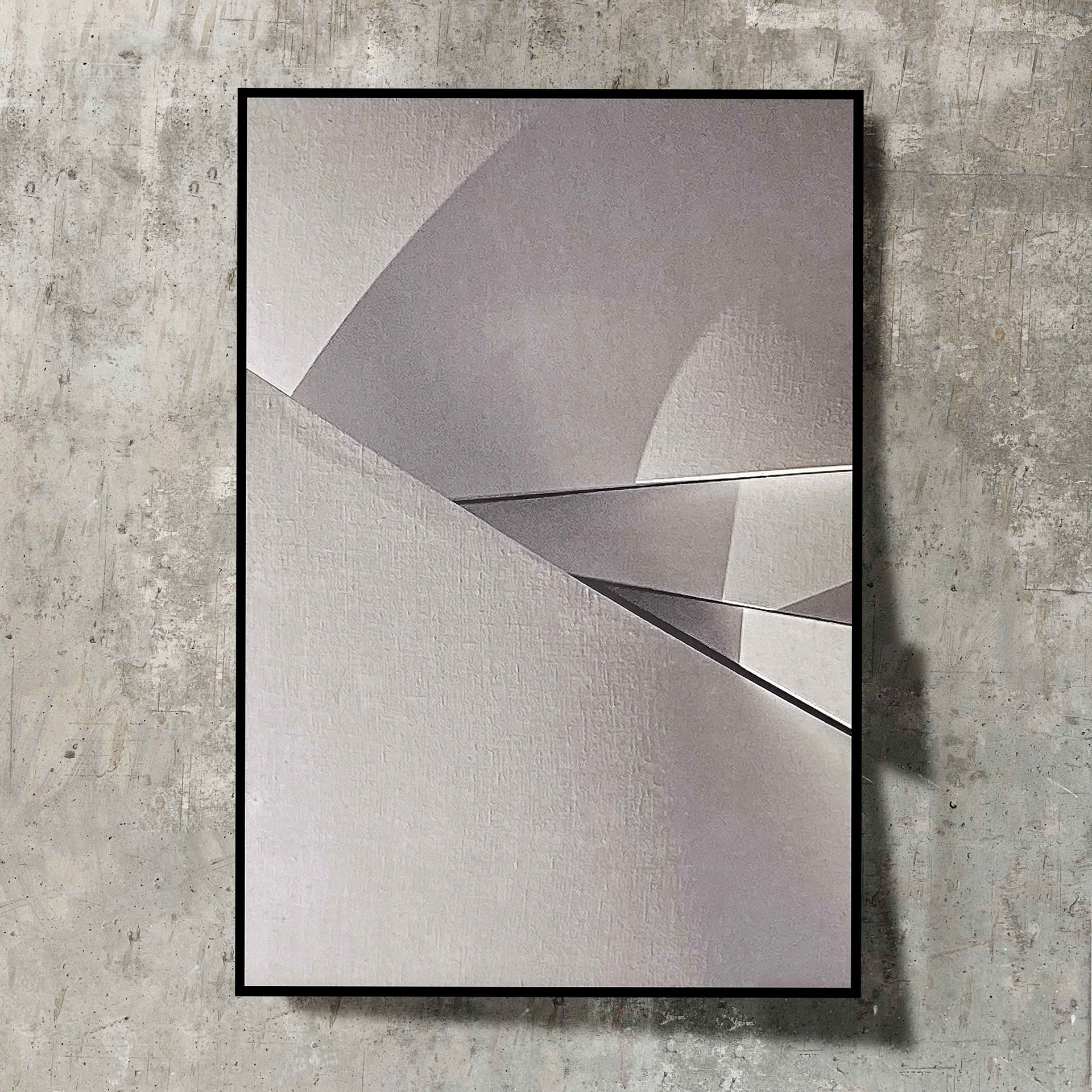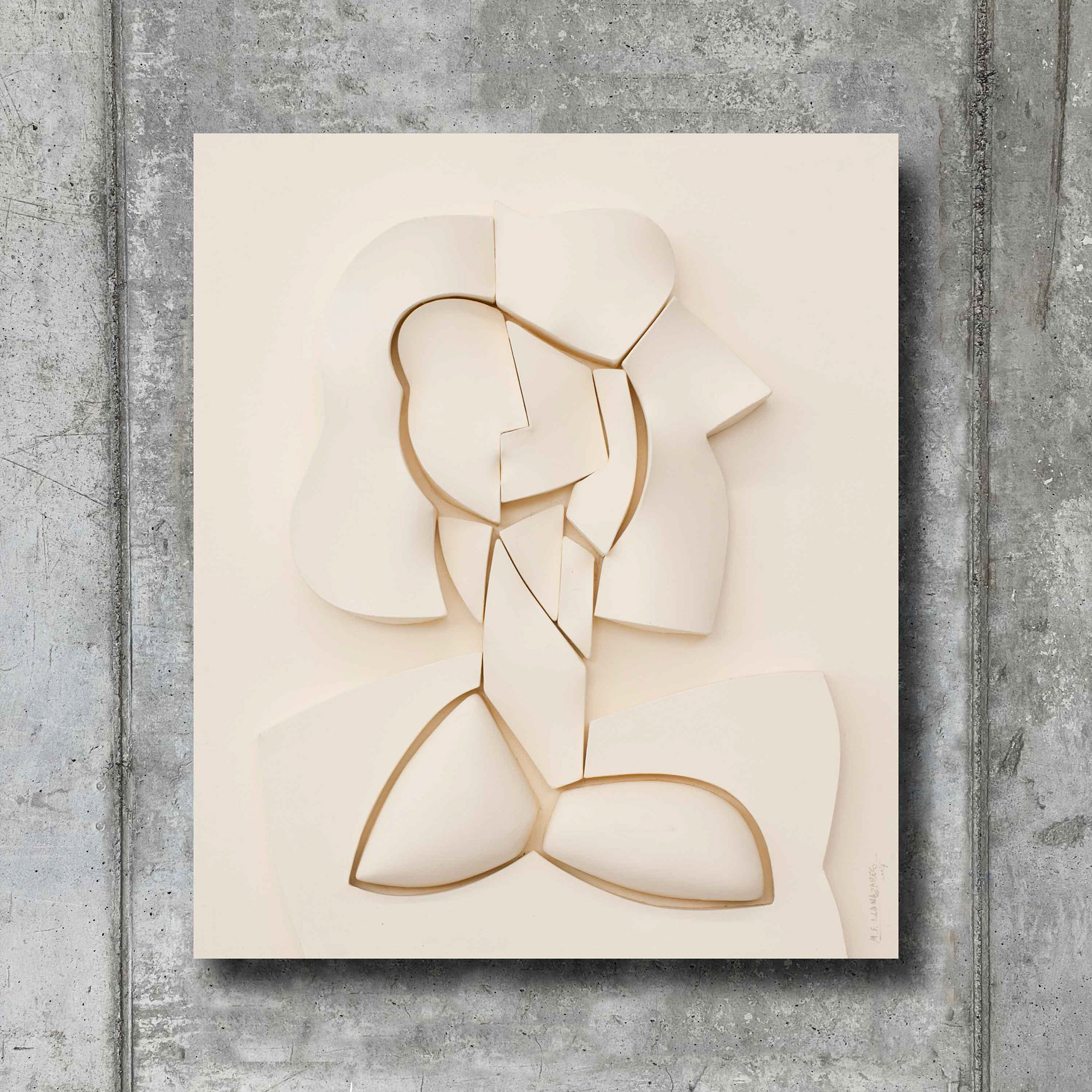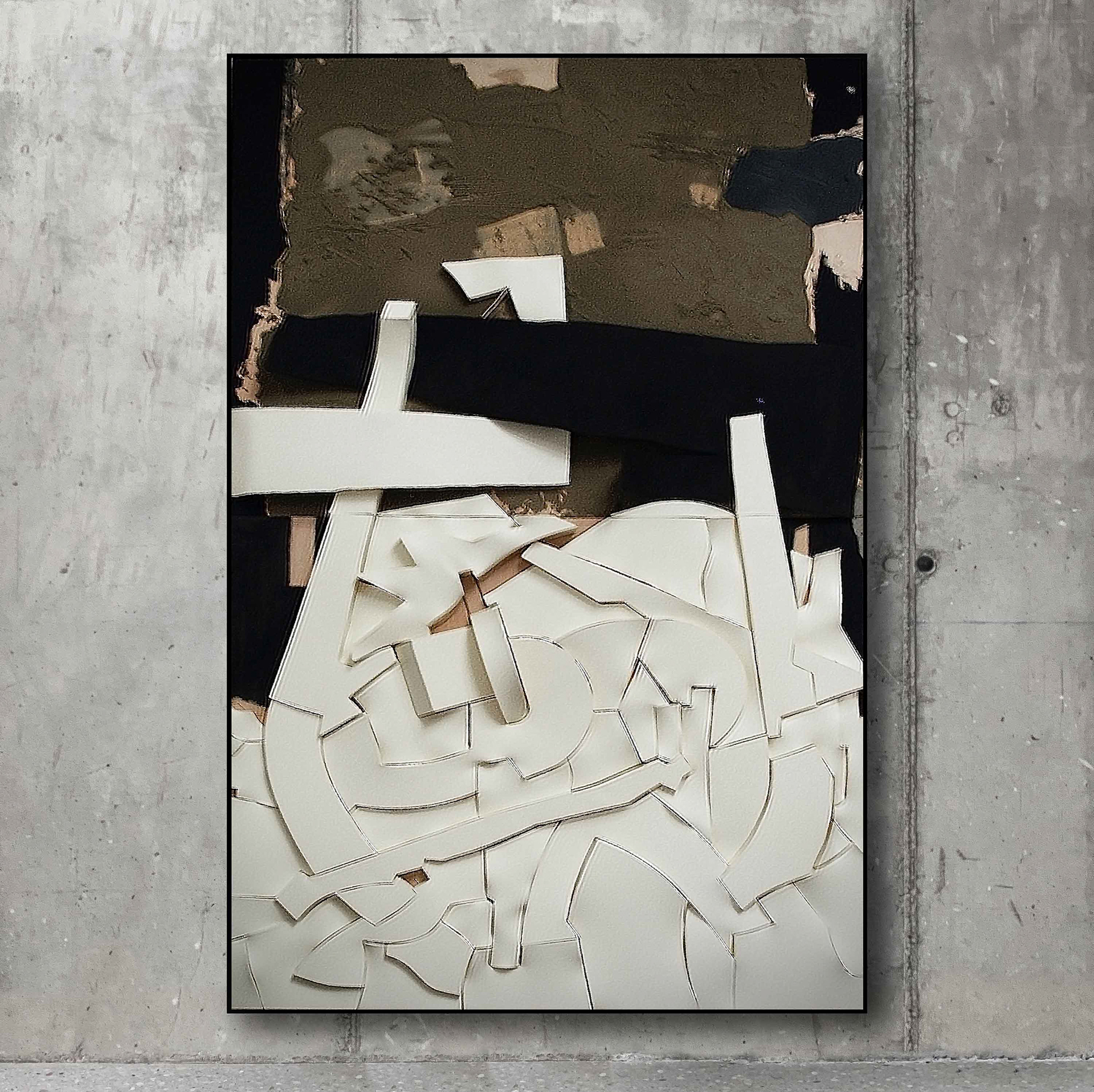A veces es difícil considerar a mi padre como pintor cuando muchas de sus obras son tan escultóricas. La mayoría de sus cuadros buscan la tridimensionalidad por medio del hueco y la perspectiva que la sombra produce. En otros cuadros es la protuberancia la que origina el volumen. Su obras son muy elaborados y meditadas; hay un cálculo de estructuras, de tensión del material, cálculo de la incidencia de la luz y la sombra como consecuencia; también se tiene en cuenta los tonos y colores que en muchas ocasiones están pensados para producir falsas sombras o volúmenes inexistentes.
Las sombras son un elemento fundamental para completar la composición. La luz tiene que estar cuidadosamente colocada en altura, inclinación y distancia para que el cuadro se pueda leer adecuadamente. Mi padre era un gran geómetra y en los bocetos preparatorios de estos cuadros se puede observar la cantidad de cálculos y problemas que tenía que resolver para materializar su obra. Seguramente hubiera sido increíble verlo trabajar con las modernas impresoras en 3D y los programas de modelado actuales en vez de sus maderas, clavos, chinchetas, telas, hilos, cola y pintura. Nunca sabremos hasta donde hubiera llegado.
Reconozco mi dificultad para interpretar adecuadamente esta serie de cuadros más allá del evidente ejercicio geométrico. Mi padre visualizaba mentalmente las proyecciones bidimensionales en un plano tridimensional con mucha facilidad y la verdadera dificultad estaba precisamente en plasmarlo en un ente físico. Geometrías matemáticamente calculadas adquirían volumen y una vez más se complementaban con sus propias sombras para crear a su vez ensoñaciones de otras figuras. Soy incapaz de adivinar cuánto hay de composición meramente artística y cuanto de imposición geométrica reglada.
Sometimes it is difficult to consider my father as a painter when many of his works are so sculptural. Most of his paintings seek three-dimensionality through the gap and perspective that the shadow produces. In other paintings, it is the bulge that creates the volume. His works are very elaborate and thoughtful; there is a calculation of structures, of material tension, calculation of the incidence of light and shadow as a consequence; The tones and colors that are often thought to produce false shadows or non-existent volumes are also taken into account.
Shadows are a fundamental element to complete the composition. The light has to be carefully positioned in height, inclination and distance so that the picture can be read properly. My father was a great geometer and in the preparatory sketches for these paintings you can see the amount of calculations and problems that he had to solve to materialize his work. It would surely have been amazing to see him work with today's modern 3D printers and modeling programs instead of his woods, nails, thumbtacks, fabrics, threads, glue and paint. We will never know how far he would have gone.
I acknowledge my difficulty in properly interpreting this series of paintings beyond the obvious geometric exercise. My father mentally visualized two-dimensional projections on a three-dimensional plane very easily and the real difficulty was precisely in translating it into a physical entity. Mathematically calculated geometries acquired volume and were once again complemented by their own shadows to create reveries of other figures. I am unable to guess how much there is of purely artistic composition and how much of regulated geometric imposition.





























